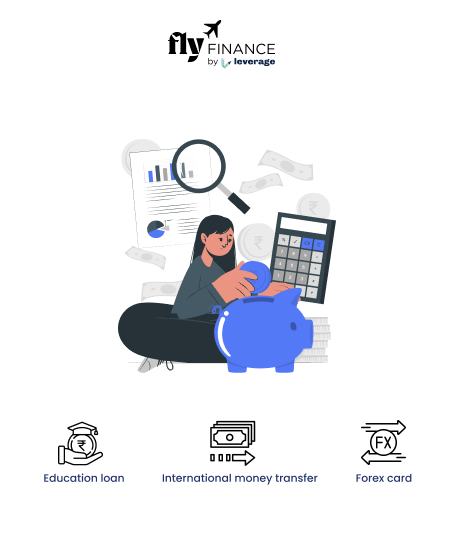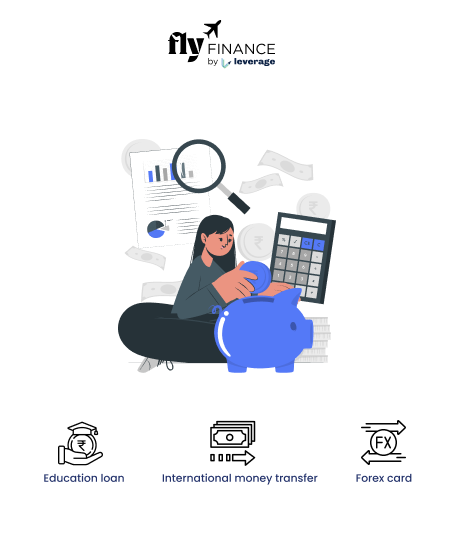Writing a demand letter for education loan is a crucial step in resolving small claim disputes effectively. While it may seem like a straightforward process, drafting a well-structured letter requires careful attention to detail. Many borrowers struggle with where to begin or how to present their claims properly.
A demand letter for education loan is a crucial legal document that helps resolve disputes and reinforces your case if legal action is required. This guide will provide insights into the importance of a demand letter for education loan, its structure, and the necessary steps to handle it effectively.
What is Demand Letter for Education Loan?
A demand letter for education loan is one specific type of formal document that is sent from one individual to another so that they can settle disputes without any problem. The sending party might be able to send a specific request for the payments or any other actions regarding right or wrong so that the grievance can be settled.
The recipient may have defaulted financially, failed to meet an obligation, or violated a contract. In most cases, lawyers draft the demand letter for an education loan, as aggrieved parties typically use it before pursuing legal action against the recipient.
Also Read: Jito Education Loan to Study Abroad
Importance of Demand Letters for Education Loan
A demand letter for education loan plays a crucial role in resolving financial disputes before taking legal action. It serves as a formal request urging the recipient to meet their loan repayment obligations. Before sending a demand letter, lenders or aggrieved parties usually attempt resolution through:
- Emails and phone calls – Initial reminders to notify the borrower.
- Formal demand letters – A final attempt before escalating the matter legally.
- Legal action – If the recipient fails to respond, legal proceedings may follow.
While individuals can draft a demand letter on their own, legal assistance ensures clarity, accuracy, and a stronger case if the dispute escalates.
Why a Demand Letter for Education Loan is Important
A demand letter for education loan ensures that borrowers are formally notified of their outstanding dues and the necessary steps to resolve them. It helps maintain clear communication and provides a final opportunity to settle the dispute before legal action.
Here’s why demand letter holds significance:
- Final Reminder: Acts as a last warning before legal steps are taken.
- Clear Instructions: Includes repayment details, deadlines, and resolution options.
- Legal Leverage: Strengthens the sender’s case if the issue leads to a lawsuit.
A well-drafted demand letter for education loan gives borrowers one final opportunity to settle their dues and avoid legal consequences. If the recipient refuses to comply, the lender may proceed with legal action to recover the outstanding amount.
Sample Demand Letter for Education Loan
(For loan repayment or missed installments)
[Your Name]
[Your Address]
[City, State, ZIP Code]
[Your Email]
[Your Phone Number]
[Date]
To,
[Bank/Financial Institution Name]
[Loan Department]
[Bank Address]
[City, State, ZIP Code]
Subject: Urgent Payment Request for Education Loan – Loan Account No. [XXXXXXX]
Dear [Lender’s Name],
I am writing this letter to formally address the overdue balance on my education loan [Loan Account No. XXXXXXX], which was sanctioned on [Loan Approval Date]. As per my records, the outstanding amount stands at [Total Due Amount], including pending EMIs, interest, and late fees.
I kindly request a detailed statement of my loan account to verify the dues and explore possible repayment options. I would also appreciate discussing any available alternatives, such as loan restructuring or an extension on the due date.
Please consider this letter as a formal request for settlement before any legal actions are pursued. I am willing to cooperate and work towards a solution that ensures timely repayment. Kindly confirm the necessary steps to resolve this matter at your earliest convenience.
Looking forward to your response. You may reach me at [Your Phone Number] or [Your Email] for further discussion.
Sincerely,
[Your Name]
Important Things Included in the Demand Letter for Education Loan
Even though it’s possible to write a demand letter for education loan on your own, it’s best if you hire a lawyer who will help you draft the document. You don’t need to worry about any set length while writing a demand letter. But you should not make it too large unless you need to clarify your intention.
Make sure you always focus on the facts while writing a demand letter for education loan. Here are some of the most important pieces of information you need to include while writing a demand letter:
- Purpose of the Letter: Clearly state why you are writing the demand letter and what resolution you are seeking.
- Involved Parties: Mention the names and contact details of both the sender (lender or institution) and the recipient (borrower).
- Date and Time: Specify when the demand letter is being issued and any relevant dates related to the loan or missed payments.
- The Demand: Clearly outline the repayment request, including the outstanding amount and any deadlines for compliance.
- Detailed Description: Provide a brief yet precise explanation of the issue, including loan details, missed payments, and any previous attempts to resolve the matter.
By including these elements, you ensure that the demand letter for an education loan is legally sound, effective, and increases the likelihood of a timely resolution.
Also Read: MBA Education Loan Abroad
What to Avoid While Writing a Demand Letter for Education Loan?
To ensure your demand letter for education loan is effective, it’s crucial to avoid common mistakes that can weaken its impact. A poorly written letter may not only fail to achieve the desired outcome but could also work against you if legal action becomes necessary.
Here are key things to avoid:
- Avoid Threats or Aggressive Language: Using hostile or threatening language can backfire, making the recipient less likely to cooperate and weakening your case if legal action follows.
- Maintain a Professional Tone: Express your concerns clearly without showing frustration or anger, as an unprofessional tone may reduce the letter’s credibility.
- Be Objective and Respectful: If the demand letter for education loan contains offensive or overly emotional language, it may not be taken seriously by the recipient or legal authorities.
- Consider Legal Implications: If the dispute escalates to court, a judge will review the letter. A well-structured, professional, and objective demand letter strengthens your position.
By keeping the language professional, clear, and respectful, you increase the chances of resolving the matter efficiently while maintaining legal credibility.
Steps to Take Upon Receiving a Demand Letter
Receiving a demand letter for education can be stressful, but taking the right steps can help resolve the issue. Borrowers should carefully review the letter, assess their financial situation, and communicate with the lender. Here are key actions to take when handling a demand letter.
- Review the Letter Carefully: Ensure all details are accurate, including the loan amount and your personal information.
- Assess Your Financial Situation: Determine your ability to repay the demanded amount or negotiate a payment plan.
- Contact the Lender: Communicate proactively to discuss possible solutions, such as restructuring the loan or setting up a new payment schedule.
- Seek Legal Advice: If you’re unsure about the implications or need assistance, consult with a legal professional specializing in financial matters.
Preventive Measures to Avoid Demand Letters
Taking proactive financial steps can help borrowers avoid demand letters altogether. Proper budgeting, timely payments, and maintaining open communication with lenders are key strategies. Below are some best practices to prevent such situations.
- Timely Payments: Always make your loan payments on or before the due date.
- Open Communication: If you anticipate difficulty in making a payment, inform your lender immediately to explore alternative arrangements.
- Financial Planning: Budget effectively to ensure funds are available for loan repayments.
A fee demand letter for an education loan is an essential step in resolving unpaid loan fees. It serves as a formal reminder for borrowers and helps lenders ensure repayment. By keeping the letter professional, clear, and solution-oriented, both parties can work towards resolving the issue effectively.
FAQs on Demand Letter for Education Loan
A demand letter for education loan is a formal written notice sent by a lender or an aggrieved party to request loan repayment before taking legal action. It serves as a final attempt to resolve disputes before escalating the matter.
The sender will need to wait for a response after they send the demand letter for an education loan to the appropriate authorities.
Keep in mind that some people choose to ignore their demand letter for multiple reasons. If you ignore the demand letter and it goes to the court, you need to provide the judge with a valid explanation regarding why didn’t you respond to the demand letter in the first place.
There is no specific amount of time taken for the settlements after the demand letter. However, the recipient needs to comply with the deadline set by the sender.
A demand letter for education loan should be sent after multiple reminders, such as phone calls and emails, have failed to secure repayment. It acts as a last formal warning before considering legal proceedings.
Key elements include the purpose of the letter, details of the involved parties, loan information, the outstanding amount, a deadline for repayment, and possible consequences of non-payment.
While you can draft a demand letter on your own, hiring a lawyer ensures clarity, professionalism, and legal accuracy, making it more effective in resolving the dispute.
While writing a demand letter for education loan, the tone should be professional, respectful, and objective. Avoid using aggressive or threatening language, as it may weaken your case and reduce the chances of a positive resolution.
While there is no fixed format, a well-structured letter should include an introduction stating the purpose, a detailed explanation of the issue, a clear demand, and a firm but professional closing statement.
If the recipient fails to respond, the lender or aggrieved party may proceed with legal action to recover the outstanding loan amount. The demand letter serves as evidence of prior attempts to resolve the dispute.
Yes, a well-drafted demand letter for education loan can be presented in court as proof that the sender made reasonable efforts to recover the loan before pursuing legal action.
The waiting period depends on the deadline mentioned in the letter, typically ranging from 7 to 30 days. If the recipient does not comply within this timeframe, legal steps may be taken.
The best way to avoid getting a demand letter for education loan is to make timely loan payments, inform the lender if you’re facing financial difficulties, and request an alternative payment plan if needed. Keeping open communication with the lender helps prevent such situations.
This is everything you need to know about a demand letter for an education loan. If you want to know more about student loans, international money transfers, and other relevant topics, make sure you follow Fly Finance.





























